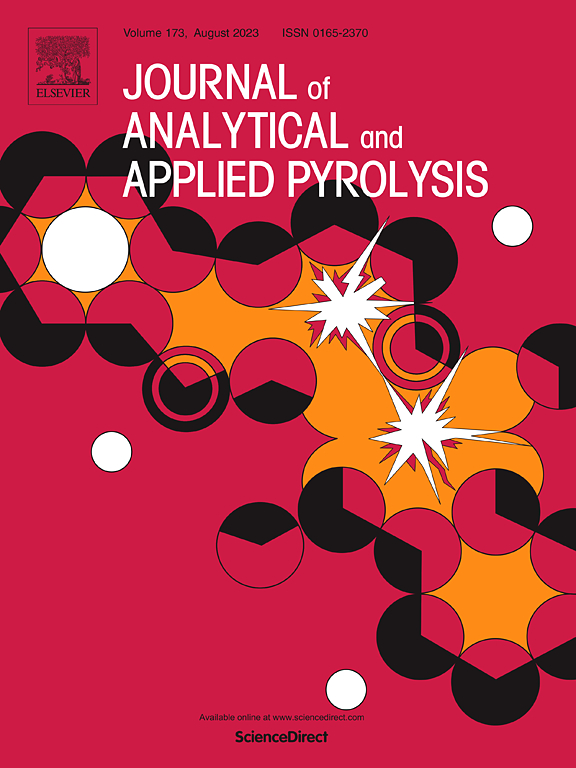基于GC拆分调制的分析热解法定量测定可生物降解塑料中的聚乙烯
IF 5.8
2区 化学
Q1 CHEMISTRY, ANALYTICAL
引用次数: 0
摘要
建立了双枪分析热解- gc /MS (DSPy-GC/MS)和演化气相分析-MS (EGA-MS)两种定量生物降解塑料(bp)中聚乙烯(PE)的方法。bp被广泛用于生产购物袋、包装、一次性工具等短命产品。少量的非生物降解塑料,即PE,被添加到BP配方中,以降低成本并提高加工性。目前的欧洲法规允许可生物降解塑料中PE的重量含量最多为1%,但没有提供有关如何测量该含量的信息。本文介绍的方法是使用一组由已知PE添加量的常见BP配方组成的参考样品开发的。对方法的线性度、准确度、基质效应、检出限和定量限进行了检验。在EGA-MS方法中,提出了一种基于中程分裂开关的新策略,使PE信号显著增加。两种方法均能定量1%或更低浓度的PE,基质干扰可忽略不计。EGA-MS法速度更快,而DSPy-GC/MS法的定量限较低。结果表明,两种方法均可用于bp的常规质量控制和符合性分析。这是第一个使用基于分析热解的技术描述bp中PE量化的工作。本文还首次提出了采用气相色谱-质谱法进行定量分析和采用中程分离开关。本文章由计算机程序翻译,如有差异,请以英文原文为准。
Quantification of polyethylene in biodegradable plastics by analytical pyrolysis-based methods with GC split modulation
Two methods based on double-shot analytical pyrolysis-GC/MS (DSPy-GC/MS) and evolved gas analysis-MS (EGA-MS) were developed to quantify polyethylene (PE) in biodegradable plastics (BPs). BPs are widely used to produce short-lived goods such as shopping bags, packaging, and disposable tools. Small amounts of non-biodegradable plastics, namely PE, are added to BP formulations to reduce costs and improve processability. Current European regulations allow for a maximum 1% PE content by weight in biodegradable plastics, but no information is provided on how this content should be measured. The methods presented here were developed using a set of reference samples composed of common BP formulations with known added amounts of PE. The methods were tested for linearity, accuracy, matrix effect, and limits of detection and quantification. In the EGA-MS method, a new strategy based on mid-run split switch was developed, resulting in a significant increase of the signal of PE. Both methods proved capable of quantifying PE in concentrations of 1% or lower and showed negligible matrix interference. The EGA-MS method is faster, while the DSPy-GC/MS method provides lower limits of quantification. The results indicate that both methods could be used for routine quality control and conformity analysis of BPs. This is the first work describing quantification of PE in BPs using analytical pyrolysis-based techniques. The use of EGA-MS for quantitative analysis, and the use of mid-run split switch, are also presented in this paper for the first time.
求助全文
通过发布文献求助,成功后即可免费获取论文全文。
去求助
来源期刊
CiteScore
9.10
自引率
11.70%
发文量
340
审稿时长
44 days
期刊介绍:
The Journal of Analytical and Applied Pyrolysis (JAAP) is devoted to the publication of papers dealing with innovative applications of pyrolysis processes, the characterization of products related to pyrolysis reactions, and investigations of reaction mechanism. To be considered by JAAP, a manuscript should present significant progress in these topics. The novelty must be satisfactorily argued in the cover letter. A manuscript with a cover letter to the editor not addressing the novelty is likely to be rejected without review.

 求助内容:
求助内容: 应助结果提醒方式:
应助结果提醒方式:


